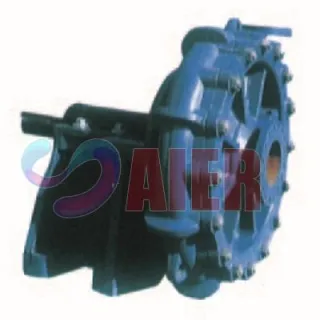aug . 15, 2024 12:21 Back to list
Top Recommendations for High-Quality Pumps Ideal for Handling Lime Slurry Applications
Choosing the Best High-Quality Pump for Lime Slurry Applications
Lime slurry, composed of water and finely ground calcium hydroxide, is used in various industrial processes such as water treatment, soil stabilization, and flue gas desulfurization. Due to its abrasive nature and the specific requirements of handling lime, selecting the right pump is crucial for ensuring operational efficiency and longevity. This article explores the key factors and options to consider when looking for the best high-quality pump for lime slurry.
Understanding Lime Slurry Characteristics
Lime slurry typically has a high viscosity and can be abrasive because of the particulate nature of lime. These characteristics pose unique challenges for pump selection. A pump designed for water transfer may not withstand the wear and tear that lime slurry can impose. Hence, it is essential to choose a pump made from durable materials that can handle the unique properties of lime slurry.
Types of Pumps Suitable for Lime Slurry
1. Centrifugal Pumps Centrifugal pumps are often used for transferring lime slurry. They offer a good balance of flow rate and head, making them suitable for various applications. However, when using centrifugal pumps, one must ensure they are fitted with specialized impellers and liners that can withstand abrasiveness.
2. Positive Displacement Pumps These pumps are ideal for handling viscous and abrasive slurries like lime. They operate by trapping a fixed amount of fluid and forcing it into the discharge pipe. Positive displacement pumps, such as diaphragm or gear pumps, are effective in maintaining a consistent flow rate, making them an excellent choice for precise applications.
3. Submersible Pumps In scenarios where lime slurry needs to be pumped from underwater sources, submersible pumps are a feasible option. They are designed to operate while submerged in the slurry and can effectively manage high solids content.
high quality best pump for lime slurry manufacturer

Key Considerations in Pump Selection
When selecting a pump for lime slurry, several factors must be considered
- Material of Construction Choose pumps made from corrosion and abrasion-resistant materials like stainless steel or high-grade polymers. This ensures longevity and reduces maintenance costs over time.
- Pump Size and Capacity Assess the required flow rate and the maximum head needed for your specific application. Oversized pumps can lead to energy waste, while undersized pumps may not handle the required volume efficiently.
- Maintenance and Serviceability Select pumps that are easy to maintain and can be serviced without significant downtime. The availability of replacement parts and manufacturer support plays a crucial role in this aspect.
- Cost vs. Quality While it might be tempting to opt for the cheapest option, it is crucial to strike a balance between cost and quality. High-quality pumps might come with a higher initial investment but can provide significant cost savings in the long run due to lower maintenance and replacement needs.
Conclusion
In summary, choosing the best high-quality pump for lime slurry requires a thorough understanding of the slurry's characteristics and the various types of pumps available. By considering essential factors such as material construction, pump size, maintenance, and cost, businesses can enhance their operational efficiency and ensure the longevity of their equipment. Investing in the right pump not only streamlines processes but also minimizes downtime, ultimately contributing to a more productive and sustainable operation. Always consult with industry experts or manufacturers to find the most suitable pump solution tailored to your specific lime slurry application.
-
High Quality Slurry Pump Seals Reliable China Suppliers & Manufacturers
NewsJun.24,2025
-
High Quality Portable Submersible Slurry Pump Supplier & Manufacturer from China
NewsJun.10,2025
-
Slurry Pump Parts Manufacturer – High Quality Rubber Spare Parts from China
NewsJun.10,2025
-
High Quality 1/3 HP Submersible Sump Pump with Vertical - Reliable Supplier & Factory Price
NewsJun.10,2025
-
High-Efficiency Centrifugal Slurry Pumps India
NewsJun.10,2025
-
High Quality Warman Centrifugal Slurry Pump Suppliers & Factory
NewsJun.10,2025
